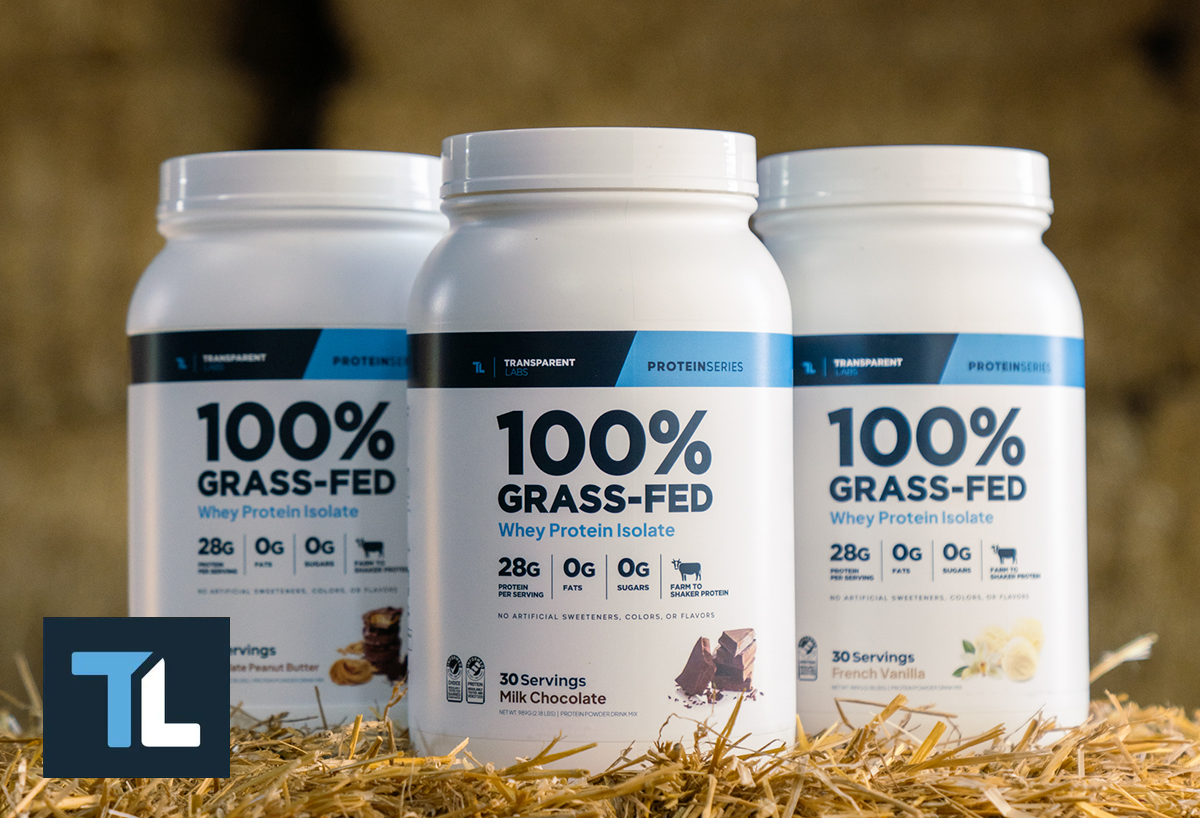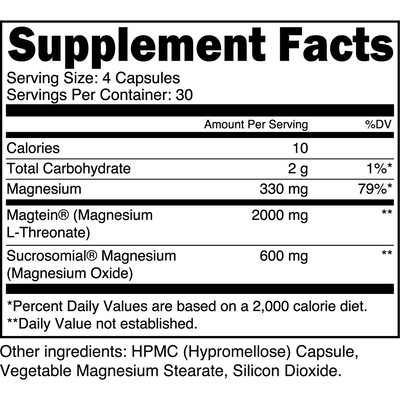Protein Powder With Milk or Water? Pros & Cons for Each

You already know about all the benefits of protein powder, and you've made it a part of your muscle-building repertoire. You've also tested enough powders to know which flavor's your favorite. Now, the question is: Should you mix protein powder with milk or water?
While dairy milk certainly makes for a tastier protein shake, your decision should ultimately be based on your personal health and fitness goals.
Mixing your shake with water is plain and simple, and gets the job done. But using milk comes with nutritional benefits for people trying to gain muscle mass and put on weight. Here's everything you need to know about the best liquid base for your protein shake.
Nutritional Differences
Making a shake with dairy milk over water changes your drink's nutritional profile. If you're trying to avoid adding calories to your shake, making it with water will maintain the nutritional profile of the protein powder itself.
For example, if we were to make a protein shake with Transparent Lab's 100% Grass-Fed Whey Protein Isolate and water, the shake would boast the same nutrition as the powder itself, because water is calorie-free and doesn't contribute any nutrients.
Protein Shake With Water
Let's take a look at the nutrition breakdown of a shake made with one scoop of Transparent Lab's whey protein isolate and 1 cup of water. You'd get:
-
130 calories
-
1g total fat (0g saturated fat)
-
210mg sodium
-
1g carbohydrates (0g fiber, 0g sugar)
-
28g protein
Protein Shake With Milk
However, mixing your shake with a cup of milk will add calories because milk contains macronutrients, including protein, fats, and carbs, which all provide calories. Each gram of fat provides 9 calories while each gram of carbs and protein provides 4 calories each.
Depending on the fat content of the milk you choose, making your protein shake with milk can contribute anywhere from 80 to 150 calories, up to 8 grams of fat, about 12 grams of carbs, and 8 grams of protein per cup.
Here's a full breakdown of what your protein shake's nutrition profile will look like depending on the type of milk you decide to use.
Keep in mind: We used Transparent Lab's protein powder as a point of reference for the examples below, so using a different powder may result in a slightly altered nutrition profile.
Skim Milk (Fat-Free Milk)
A quick captain obvious moment: Skim milk, also known as fat-free milk, doesn't contain any fat. It's made by separating the fat from whole milk by spinning the milk through a centrifuge, and the result is zero-fat milk that retains most of the other nutrients found in whole milk, such as protein and carbs.
Mixing whey protein powder with skimmed milk will result in a shake that has:
-
213 calories
-
1g total fat (0g saturated fat)
-
308mg sodium
-
13g carbohydrates (0g fiber, 12g sugar)
-
36g protein
2% Milk
Unlike skim milk, 2% milk (or semi-skimmed milk) contains 2% milkfat, which contributes some more calories from fat. Making a shake with one scoop of protein powder and one cup of 2% milk will give you:
-
252 calories
-
6g total fat (3g saturated fat)
-
308mg sodium
-
13g carbohydrates (0g fiber, 12g sugar)
-
36g protein
Whole Milk
Whole milk has the highest fat content, which explains why it's higher in calories than non-fat and skimmed milk varieties. Using whole milk in a protein shake will contribute the most calories to your drink.
A whey protein shake with one scoop of protein powder and one cup of whole milk contains:
-
279 calories
-
9g total fat (5g saturated fat)
-
308mg sodium
-
13g carbohydrates (0g fiber, 12g sugar)
-
36g protein
The Benefits of Using Milk

It'll Taste Better
If you've ever mixed a protein shake with plain ol' H2O, you're probably well-aware that the flavor isn't something to brag about. Using milk instead of water will give your protein drink a creamy texture, and more luscious consistency and flavor profile. Many people like it to a milkshake, and it can certainly bust those sweet tooth cravings.
The milk helps balance and round out the flavors of the protein powder, which makes it more enjoyable to drink.
It'll Add More Protein
Using milk — whether it's skim, whole, or anything in between — will add extra protein to your drink.
One cup of milk, regardless of the fat content, contains about 12 grams of protein. So making a protein shake with one cup of milk and one scoop of powder will result in a shake that boasts around 36 grams of protein. That's pretty impressive.
A 2021 research analysis of four randomized controlled trials published in the Journal of Human Nutrition And Dietetics found that getting 30 to 40 grams of protein per meal may help stimulate muscle protein synthesis in older adults and is linked to preventing sarcopenia (age-related muscle loss).
So if you're occasionally using a protein shake as a meal replacement, your best bet is to shake it up with some milk.
Making your shake with milk is also a smart strategy if you often fail to hit your protein goals. Active people should aim to get 0.5 to 0.9 grams of protein per pound of body weight daily, according to the consensus from the Academy of Nutrition and Dietetics, Dieticians of America, and the American College of Sports Medicine. An extra 12 grams of protein from milk can certainly help you hit that daily goal.
It Can Aid Muscle Recovery
Milk contains plenty of protein, but more specifically, it boasts a specific type of protein called casein.
Casein protein is slow-digesting, which means it releases amino acids at a slower rate than other types of protein such as whey. Casein's slow digestion rate makes it especially great to take before bed because it can help with muscle recovery while you sleep, per a 2020 study in Physical Activity and Nutrition.
In addition to protein, milk contains carbs, which may boost your muscle recovery after a workout. Carbohydrates can help stimulate muscle protein synthesis even greater than protein alone when consumed after a workout, according to the International Society of Sports Nutrition position stand.
The Benefits of Using Water

You'll Take in Fewer Calories
If your goal is to lose weight, you'll want to use water in your protein shake. Water doesn't contribute any additional calories unlike milk, which contains calories from fat, protein, and carbs.
When you're on a calorie deficit diet for weight loss, drinking protein shakes made with water can help you get all the protein you need with none of the extra calories you don't.
It'll Digest Faster
Whey protein is a fast-digesting or fast-acting protein, so the amino acids enter your bloodstream quickly, making it an ideal choice for post-workout recovery and muscle growth. Consuming whey protein powder with water will help you get that protein into your muscles faster than if you were to mix a shake with milk.
That's because milk contains fats and carbs, which slow down your digestion. That's not necessarily a bad thing — fats and carbs boast many benefits, and you need them in your day to support your overall health.
But if your goal is to immediately replenish your muscles with protein after a workout, a water-based shake is the way to go.
It's Ideal for People With Lactose Intolerance
If you're lactose intolerant, you're probably already skipping the whey and opting for a vegan protein powder. Cow's milk contains lactose (a natural sugar present in certain dairy products) and making a shake with milk can trigger symptoms like gas, bloating, and diarrhea in people living with lactose intolerance.
So if you're intolerant to dairy, avoid milk and instead mix a protein shake with water. You can also consider using lactose-free dairy milk or a plant-based milk, such as soya milk or pea milk — these two vegan options are the highest in protein and have a similar nutrition profile to dairy milk.
It's Convenient
Chances are, you're not walking around with a carton of milk on hand.
If you're planning to drink your protein on the go, you can easily scoop a serving of protein powder into a shaker bottle and fill it up with water right before you want to drink it. That makes water the more convenient option for folks looking to down their shake anywhere but home.
How to Choose Based on Your Goals
There are a few factors that may influence making the choice between milk and water, but it ultimately boils down to your health goals and dietary restrictions. Here's a handy breakdown that details which liquid you should opt for based on your personal needs and goals:
Muscle Gain and Bulking
Mixing your shake with milk is the way to go if your goal is to build lean muscle mass. Milk is a complete protein source, and is composed of both whey and casein proteins. Since these two proteins are absorbed at different rates, you'll get a sustained release of amino acids to support muscle repair and growth. If you're a hard gainer, getting those extra calories from milk can help you put on pounds.
Weight Loss
If losing weight is your goal, choose water over milk. Water helps keep the shake's total calorie intake lower, helping promote a calorie deficit required for weight loss. Water doesn't contain extra carbohydrates or fats like milk does, but you'll still get the protein you need to maintain lean muscle mass from the protein powder.
Dietary Restrictions
If you have a dairy intolerance, skip the milk and opt for water to avoid any potential digestion issues. If you need something more substantial, mix your shake with a plant-based milk such as soya milk or pea protein milk. You can also go for something like oat milk, but note that this popular pick is very low in protein.
Using Protein Shakes as a Meal Replacement
When you're on the go and need to replace a meal with a protein shake, consider choosing milk as your base. Using dairy milk will contribute additional protein to your drink. It'll help round out the nutrition profile of your shake and provide you with a healthy balance of macros to promote satiety.
Conclusion
When it comes to choosing between milk and water as your protein shake base, there's no one-size-fits-all answer. Whether you consume whey protein with milk or plain H2O all depends on your personal health and fitness goals as well as your dietary preferences.
If your goal is to build lean muscle mass, mixing your shake with milk is the best bet because the milk will add extra muscle-building protein (and calories) to your drink. If weight loss is your goal, opt for water since it's calorie-free and therefore doesn't change the nutrition profile of your protein powder.









